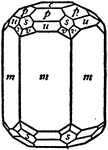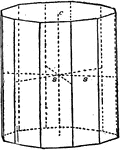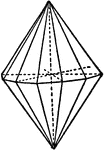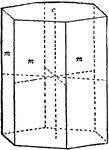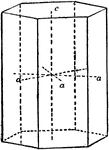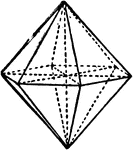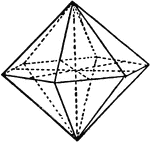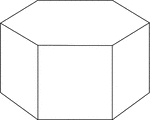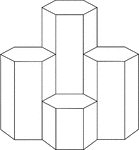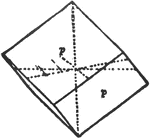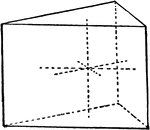Clipart tagged: ‘hexagonal’
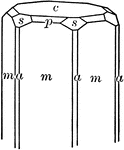
Beryl
"Hexagonal. Strong prismatic habit. Frequently vertically striated and grooved. Forms usually present…

Calcium Phosphate, Apatite
This crystal of Calcium Phosphate, Apatite, represents a complex combination of hexagonal hemihedral…
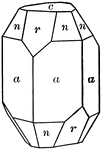
Corundum
"Hexagonal-rhombohedral. Crystals usually prismatic in habit or tapering hexagonal pyramids." —…

Corundum
"Hexagonal-rhombohedral. Crystals usually prismatic in habit or tapering hexagonal pyramids." —…

Crystal of Dioptase
"...represents a crystal of dioptase with the fundamental rhombohedron (r) and the hexagonal prism of…
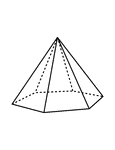
Flashcard of a Pyramid with a Hexagonal Base
A flashcard featuring an illustration of a Pyramid with a Hexagonal Base
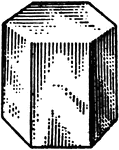
Graphite
"The second form of carbon, known as graphite, is a leaden-gray solid with a metallic luster and a specific…

Hematite
"Hexagonal-rhombohedral. Crystals usually thick to thin tabular. Basal planes prominent, often showing…
Hematite
"Hexagonal-rhombohedral. Crystals usually thick to thin tabular. Basal planes prominent, often showing…
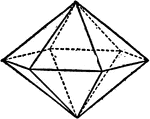
Hexagonal Bipyramid
"...bounded by twelve isosceles trianes each of which are equally inclined to two planes of symmetry."…
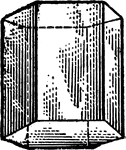
Hexagonal Prism
"Science has succeeded in classifying the thousands of known crystals in six systems, to each of which…
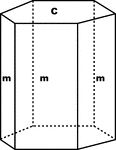
Hexagonal Prism and Basal Pinacoid
"...shows a combination of a hexagonal prism (m) with the basal pinacoid (c)." -The Encyclopedia Britannica…

Hexagonal Prism of the First Order
"Hexagonal prism of the first order, consisting of six faces also parallel to the hexad axis, but perpendicular…

Symmetry of normal class
"The symmetry of the Normal Class of the Hexagonal System is as follows: The vertical crystallographic…

Hexagonal Prism
Illustration of a right hexagonal prism with a height less than the length of the edge of the hexagon.

Hexagonal Prism
Illustration of a right hexagonal prism with a height greater than the length of the edge of the hexagon.
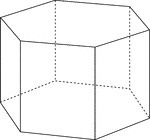
Hexagonal Prism
Illustration of a right hexagonal prism with hexagons for bases and square faces. The hidden edges are…

Hexagonal Prism
Illustration of a right hexagonal prism with hexagons for bases and rectangular faces. The height of…
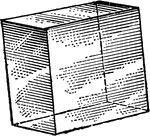
Rhombohedron
"Science has succeeded in classifying the thousands of known crystals in six systems, to each of which…

Six-sided Pyramid
"Science has succeeded in classifying the thousands of known crystals in six systems, to each of which…

